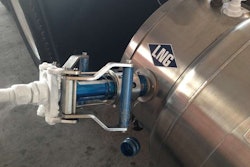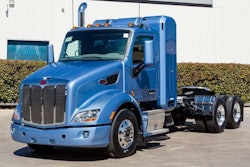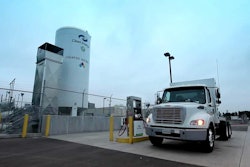 DTNA’s T.J. Reed outlines some of the challenges and opportunities facing OEMs in the natural gas market at the 2014 ACTExpo in Long Beach, Calif.
DTNA’s T.J. Reed outlines some of the challenges and opportunities facing OEMs in the natural gas market at the 2014 ACTExpo in Long Beach, Calif.At a panel discussion on global OEM strategies for natural gas vehicles at the ACT Expo in Long Beach, Calif., representatives from OEMs including General Motors, Audi, Daimler Trucks North America, Volvo Trucks and Tata Motors said awareness is key to future growth and development in the natural gas vehicle market.
Dick Kauling, engineering manager of gaseous fuel systems for GM says there are several factors OEMs must get right when looking at the natural gas and alternative fuel markets. “In the heavy end of the light-duty market, infrastructure determines where our products are being sold and where they get deployed,” said Kauling. “We’ve seen significant growth in the last two years in stations added to the U.S. mix.”
T.J. Reed, director of product strategy for DTNA, says the challenge as a global OEM is how to develop liquid, gas and electric solutions and package them on vehicle platforms and make them work commercially.
“You have these systems you have to leverage across continents with very different markets. These trucks are built to do a job, and operationally they have to deliver,” says Reed. From a North American market standpoint, Reed said, “The big thing for us is improving vehicle integration. How do you take more weight out, improve aerodynamic efficiency to get more payload on the vehicle, that is where our focus is.”
Demand for natural gas vehicles is increasing, says Frank Bio, director of sales development, specialty vehicles and alternative fuels for Volvo Trucks. “This is a pull-through market right now. Customers are asking us for [alternative fuel vehicles],” he says. “They’re the ones that are driving this market more than anything. What we are trying to do is to respond to those requests quickly.”
“Every customer is talking about natural gas,” says Bio. “Three things are driving it: environment, supply and economics. It costs less to run if you can get a quick payback on these vehicles.” Shippers are also playing a big role in the demand for natural gas vehicles.
As fleet adoption of natural gas tractors continues, Bio says one of the challenges facing OEMs is to improve vehicle integration, such as improving tank storage aerodynamics and reducing tank weight, to recoup some potential lost fuel efficiency savings. DTNA’s Reed agrees.
“There’s not one single solution in terms of vehicle, engine and tanks, it’s a total team effort,” says Reed. “We need to look at the obstacles in front of us and remove those one-by-one. If we need higher power ratings, those engine will come online. If we need to take weight out of tanks to add capacity, those innovations are happening.”











